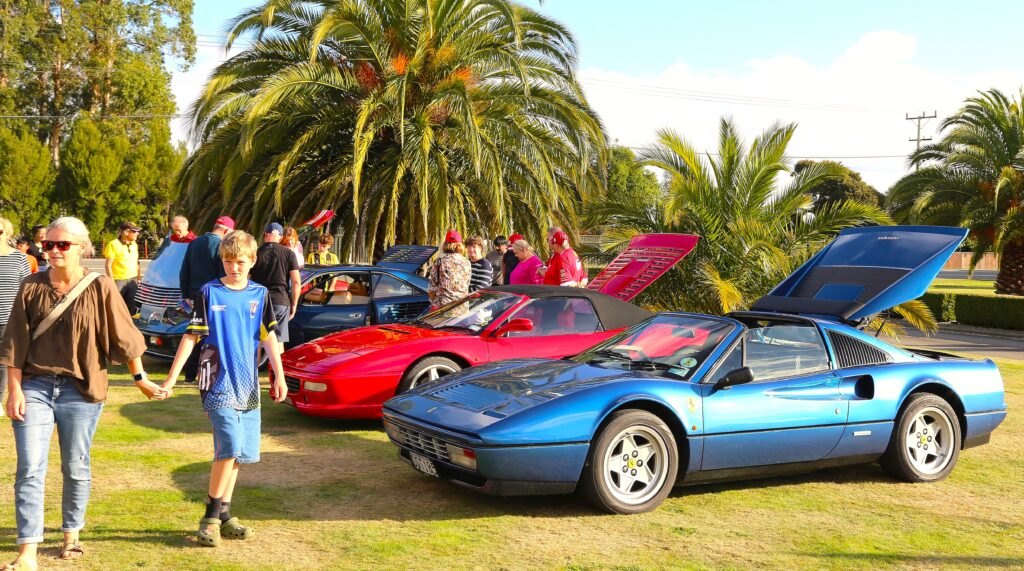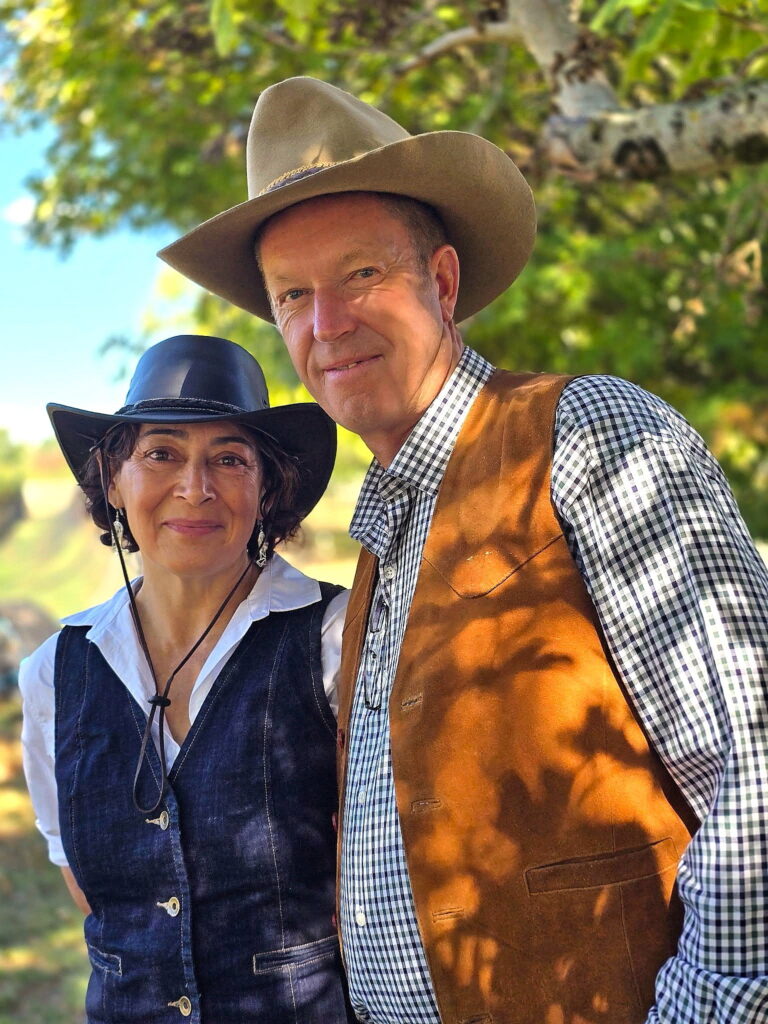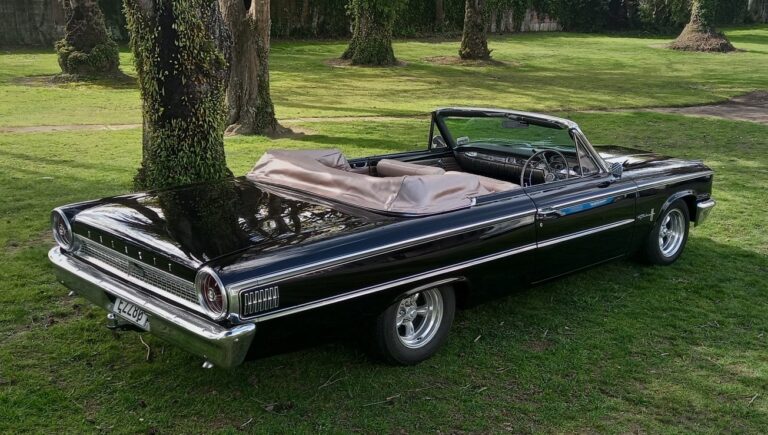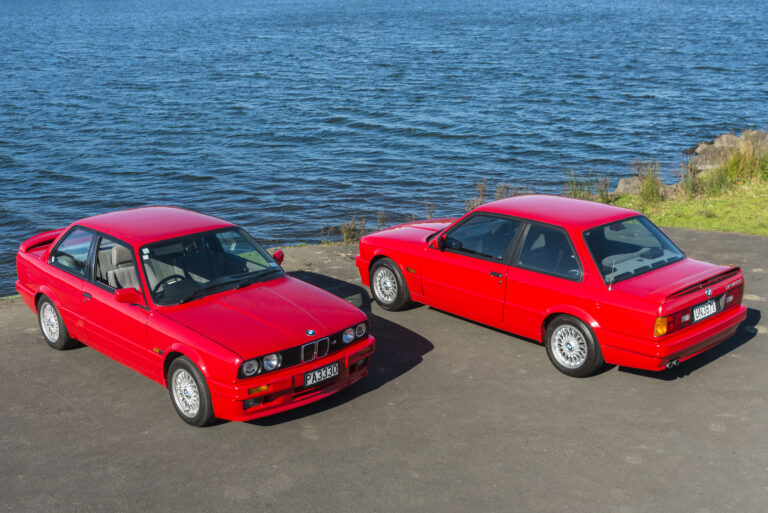Good for the soul, a dose of Hemi Orange – Chrysler’s champion Charger
The Australian-developed Chrysler Charger was a game changer for the company in 1971, as it faced a faltering start introducing its new VH range. The stylish big coupe signalled a massive change of direction and emphasis for Chrysler.
Auckland racing driver Rod Coppins raced successfully in Australia and New Zealand. Rod found success behind the wheel of a couple of Chargers, and it is a special E49 R/T in the custody of Mike Todd for some years, that is our feature car.
A full restoration of this car has been completed at Auto Restorations (AR) in Christchurch. We recently sampled the car, ready to be shipped back to Mike and spoke to AR’s Harry Dawber, leading the team who completed the superb restoration of this rare piece of NZ motor racing history.
I mentioned that Chrysler Chargers were never built to this standard as we walked around the gleaming Charger in its Hemi Orange colour scheme.
“We took a lot of time getting those shut lines exactly right. It’s been a great car to work on, and the paint and trim have been very well done by the team here.”
Don’t forget that this edition also comes with our FREE huge wall poster.
This issue features a 1974 Ford Capri Mark 1, GXL Coupe
To purchase a copy of this magazine, head here to our own online shop
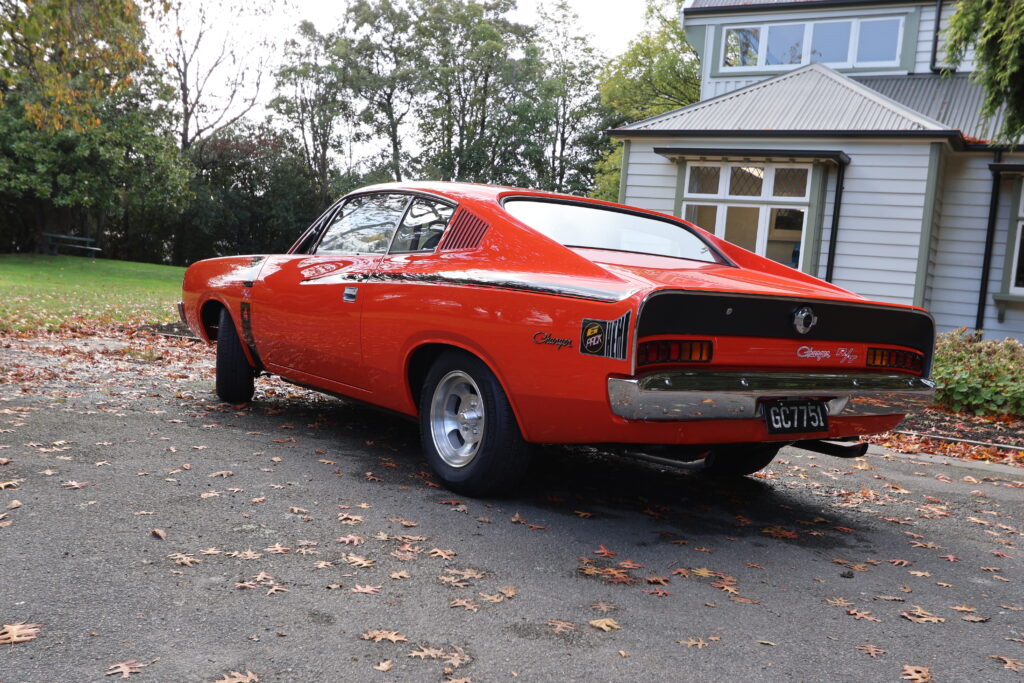
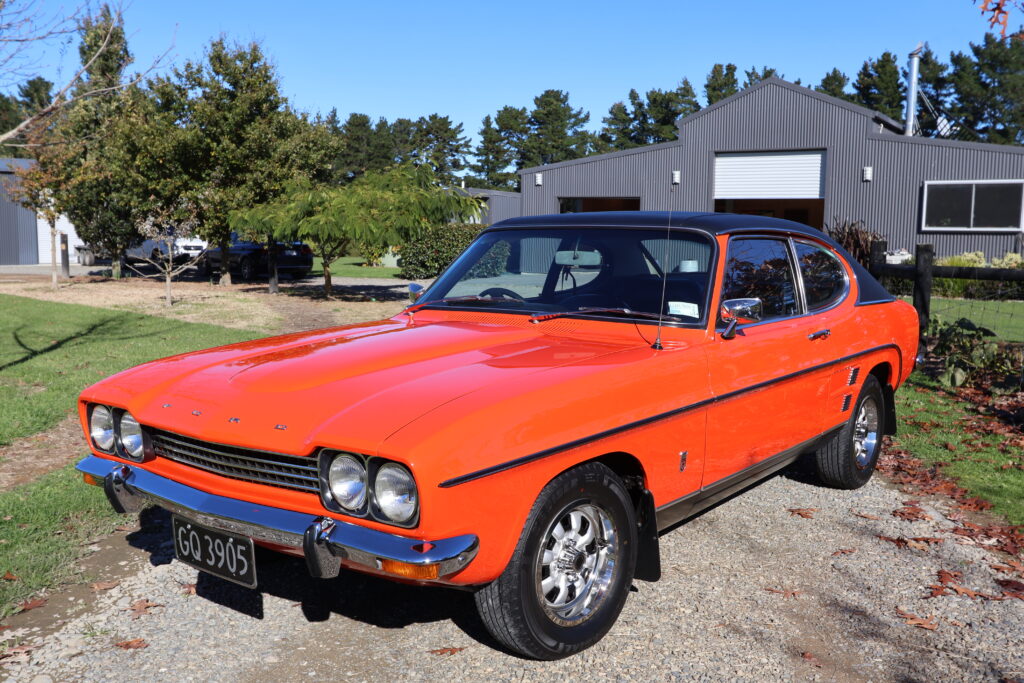
70 years of Citroen DS19 – Citroen’s DS Goddess refuses to age
A star exhibit at the Paris Motor Show in 1955, Citroën’s DS stunned crowds of eager buyers with its futuristic styling and groundbreaking engineering. Nothing was comparable. Donn Anderson pays tribute to the fabulous Citroën DS19 and ID19. Now, 70 years later, the pioneering design still attracts admiring glances and is much loved by its New Zealand owners.
“Talk to owners, and they are usually forthcoming about the car’s reliability and soothing ability to mix with modern metal. They agree with the maker’s claims at launch that this was the car of the future for the roads of today.
Current New Zealand owners like Neil Tolichand former saloon car exponent Jack Nazer are willing to share their enthusiasm for this innovative machine that arrived at a time when most four-door sedans were mechanically simple and, in styling terms, conventionally boxy and boring. Nazer’s DS21 example is one of the newer cars with the upgrade to fuel injection. Here was an innovative car that looked like it had dropped from the sky.”
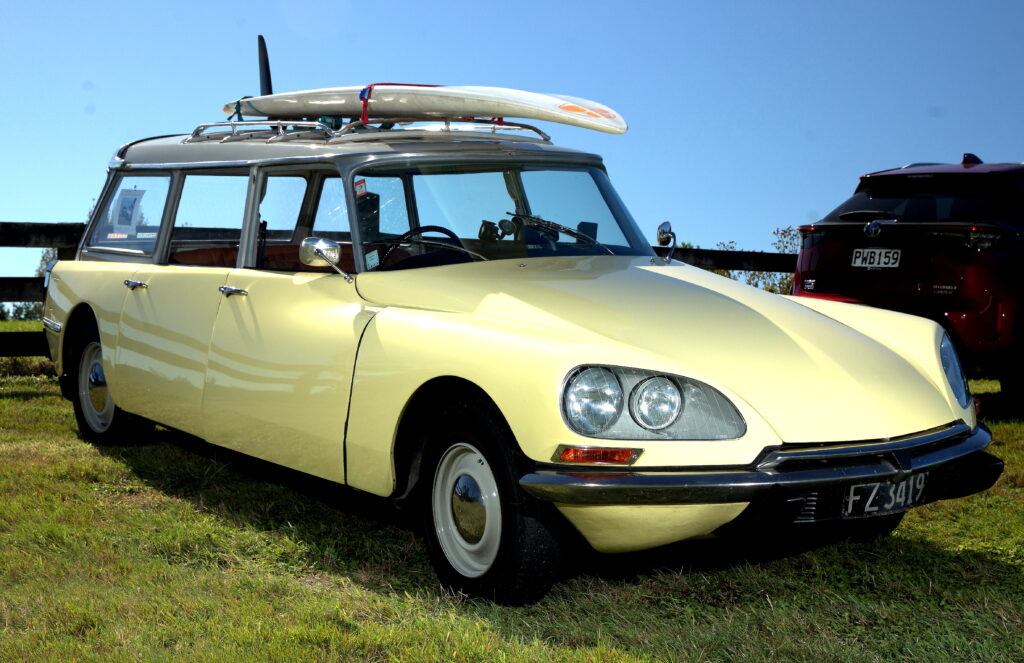
1981 Vauxhall Chevette, 1970 Chevrolet C10 Custom, school-days Chevette
Life is full of coincidences, and in the case of a Wellington couple, Michael and Janine Ahie, they recreated a slice of nostalgia from their University days through to when they were married.
“Their 1981 Vauxhall Chevette is close to how it appeared back in 1984 when the two first used it as their daily driver while attending Massey University. If Michael’s face is familiar and the brilliant metallic red Rover SD1 sharing the garage with the Chevette rings a bell, then that’s because the Rover featured in issue 303 of New Zealand Classic Car back in 2016.
Back in 1984, Michael headed to Massey University in his Mum’s 1981 Vauxhall Chevette, where he met Janine in their first week at University, as Michael recalls. “We went on our first date in that car. We kept it until 1993 when we got married.”
Up until that point, the Chevette provided daily transport for the pair everywhere they went, and it was now stored away in a stable in their lifestyle block at Pahonga Valley, while the pair moved around New Zealand.
“I was working for Toyota, so a company car was provided, and the Chevette stayed in the stable. When we got married in 1993, we decided to sell it to buy a ski boat.”
The Chevette was sold to a dealer, and that appeared to be the end of a happy association with the little blue hatchback.”
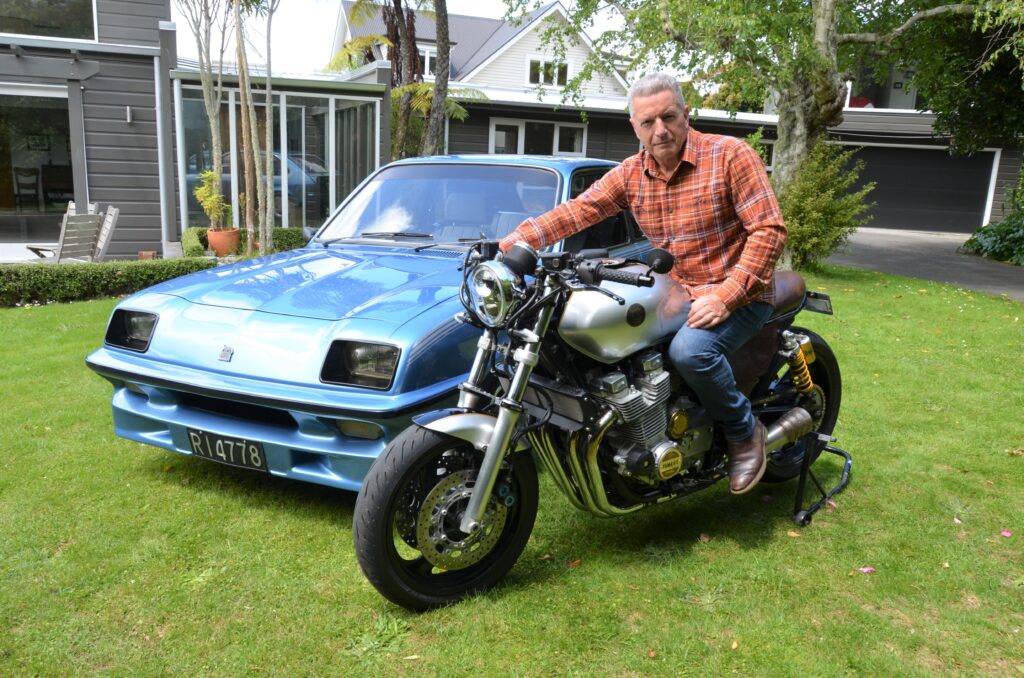
1969 TVR Tuscan – ice racer’s TVR survivor
Since 2001, a tiny TVR Tuscan has been successfully campaigned in many Southern Festivals of Speed, with impressive results, until an accident at the Skope Classic at Ruapuna in 2020 put an end to its motor racing exploits.
“At the time of its mishap, the distinctive white car #15 had been campaigned since 2001 by Canadian champion ice racer, Jack Ondrack, supported by a team of Southern race mechanics. There are days and many long nights spent fixing problems, such is the fickle nature of motor racing and long-time friendships are made. Jack had sent the TVR Tuscan V8 to New Zealand in parts for Riversdale car constructor/restorer Greg Elder to build for classic racing and maintain in between seasons. A saloon car racer up until a few years ago and also involved with Inky Tulloch’s Australasian Truck Racing championships, Greg brought a lot of expertise to the team.
These days, Jack calls Edmonton, Canada, home. For some years now, he and his wife Esther have escaped Canada’s winter snows and flown South, enjoying their holidays in New Zealand.
There was a lot of golf played, as well as enjoying the camaraderie of classic motor racing, so Jack decided to get a car built locally, which he could base in New Zealand.”

A dream trip – Europe by Porsche in 2010, part two
Mal McKee completes his epic Europe experience, a journey made in a Porsche 930, his dream car of 30 years, returning him safely to his base in Aberdeen.
“Driving through the night to a friend’s in Leewarden, Holland, it was time to find out what the 930 can do. I chose a quiet night, with a flat straight, in zero wind to get the most honest reading. Mr Porsche says 265kph, and I got an exact indicated 265 with a photo to prove it. Surprisingly stable at that speed, too!
It was then a couple of hot days with a friend at the Moto GP in Assen, but no Rossi, after he’d broken his leg a couple of races previously, which probably allowed his team-mate Lorenzo to take the race.
Following his win, he stopped right in front of us afterwards, so a nice photo opportunity there of the then-upcoming 2010 champion. Very impressed with the Red Bull Rookie racers on their matching KTM 125s, these kids were about 13 years old, such close racing. The next bunch of Moto GP riders in-the-making for sure.”
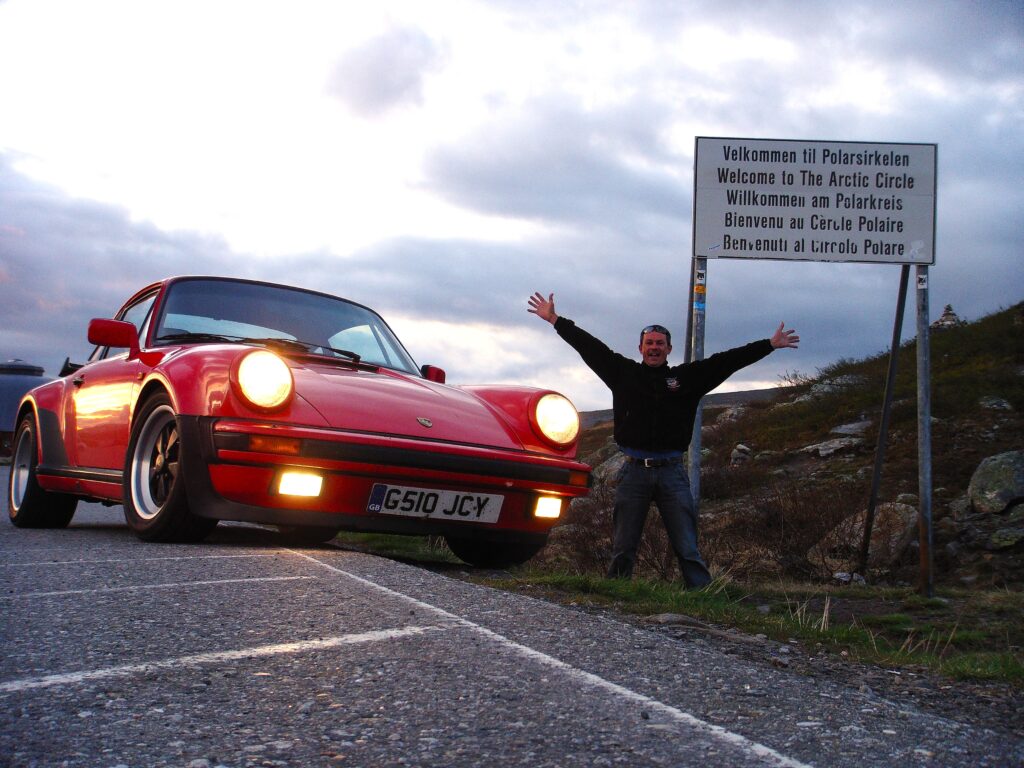
400, not out!
New Zealand Classic Car marks a significant achievement with this, the 400th issue. Since the early 1990s, our writers have revealed what made them become classic car enthusiasts. Some of the magazine team of writers share their passion for classics.
“My first car was a 1969 Escort 1300 XL. I loved that car, but that didn’t mean I looked after it. I thrashed it, bashed it and crashed it before buying a Beetle and then a Cortina and four more Escorts. I should have taken better care of it and kept it, but hindsight is a wonderful thing. Now you seldom see one. It seems a lot of the owners of Escorts were similar to me. They didn’t appreciate what they had and drove like they were escaping terrorists in Beirut. Sellers seem to think they are better than Bitcoin and ask prices to match.
For me, the Ford Escort Mark 1 and Mark 2 epitomise New Zealand motoring. There were body styles for the single man, the family, and the tradesman. Their success was during a time when hiring ‘an Escort’ had a very different connotation indeed.
My choice for New Zealand’s car that shaped the country? The humble Ford Escort!”
Vaughan Wilson
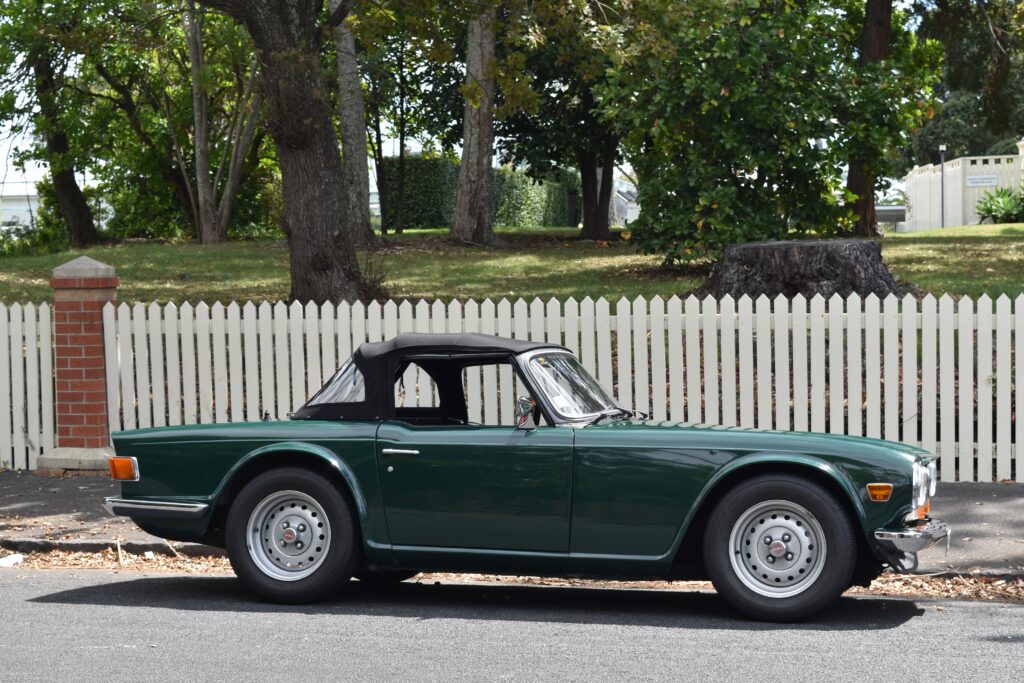
2002 Maserati 3200 GT – the music of sound
The name Maserati is enough to invoke all sorts of passions for this famous marque, especially for that magnificent sound from one of the sweetest-sounding V8s around. Jim Richardson spends a delightful few hours with an Italian gem.
“When he nosed his gleaming champagne-hued 2002 Maserati 3200 GT out of the shed, I was enraptured. Its stunningly sensuous body, created by none other than Giorgetto Giugiaro, stood out even among the beautiful Alfas, Romeos and Lancias, also in his stable.
It appears to be everything one would expect of a Maserati, the legendary marque that dominated grand prix racing during the golden age, piloted by such greats as Tazio Nuvolari, Juan Fangio, Stirling Moss, and even il Commendatore himself, Enzo Ferrari.
The sound of Webster’s Maserati 3200 GT twin-turbo dual overhead cam 32 valve, 3.2-litre V8 is music to what is left of my hearing.”
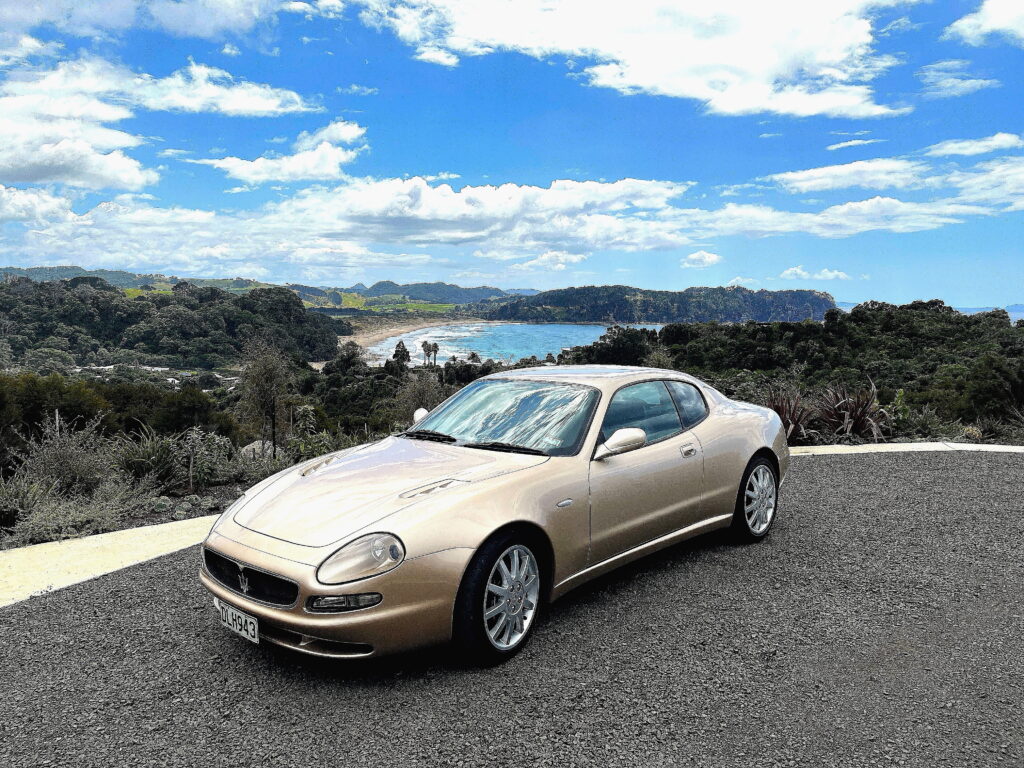
An Asian Sorte – part 2
We complete Jonathan and Janet Paape’s travels and their exciting visit behind the discreet gate of Bali’s Tuksedo Studio.
“Indonesian 300SL, Gullwing that can’t fly. What we found behind that gate wasn’t just craftsmanship. It was pure magic! To any car enthusiast, the word Gullwing means just one car, the Mercedes 300SL Gullwing. Those iconic doors, opening upwards like the wings of a bird, epitomise elegance and engineering prowess. When Friedrich Geiger designed the 300SL, Gullwing race car in 1952, those doors weren’t for show. In austere post-war Germany, practicality reigned supreme, and its unique doors were a matter of necessity, not indulgence.”

Shelf Classics – Immortalising the world’s best part 2
We continue Aaron Mai’s visit to modeller extraordinaire, Tony Lyne and finish with a detailed look at some stunning examples of the craft, plus some examples of work in progress.
“One of the biggest challenges is replicating the finish of real metal finishes using paint, and it is extremely difficult, so Tony has gone one step further and lathes, shapes and solders overflow tanks and intake trumpets from metal perfectly to scale.
There is no substitute for the real thing, especially in classic race machinery, which is what drew Tony in as a kid, as he recalls.
“The exposed nature of everything on a classic race car, where you can see the motor and appreciate the engineering and how exposed the drivers were, is what makes these subjects so special.”
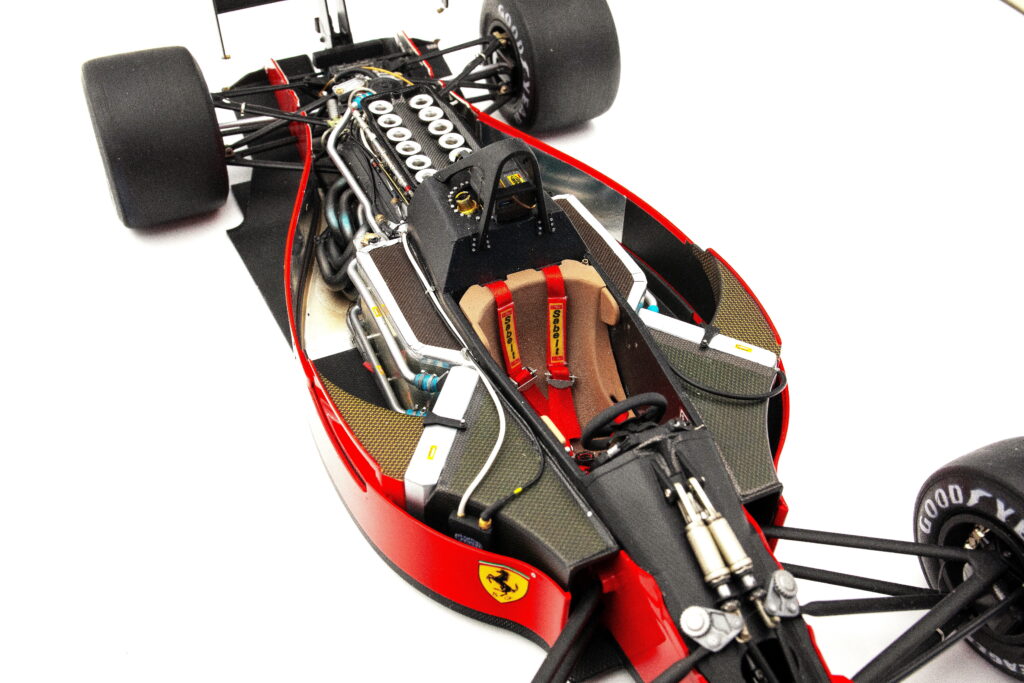
Motorman – Keeping a collection diverse – part 2
Donn Anderson continues the story of his meeting with Aucklander, Neil Tolich, exploring his collection of special classic cars and finds out why it does not need to be expensive to be unique.
“In total contrast, we had to pause to examine the 68-year-old, unrestored, albeit superbly original Citroen DS19, front mid-engined, front wheel drive saloon for which Neil holds special admiration. All these years later, you still have to admire this sensational design with its brilliant French flair.
Neil’s example is believed to be the oldest, unrestored right-hand-drive, British-built DS19 still on the road, anywhere in the world. Imported to Christchurch in 1957, during the first 18 months of its life, it was driven by Ray Archibald, whose motor dealership held the Jaguar, Dodge and Citroen franchises.
Ray won the 1962 and 1963 NZ saloon car championships in a 3.8-litre Jaguar but liked driving the DS for regular road use. Years later, Tolich tracked down the Citroen to rural Taranaki and offered to buy the car, but the owner was not interested in selling. A year later, he again visited the owner and presented an offer the owner could not refuse.”
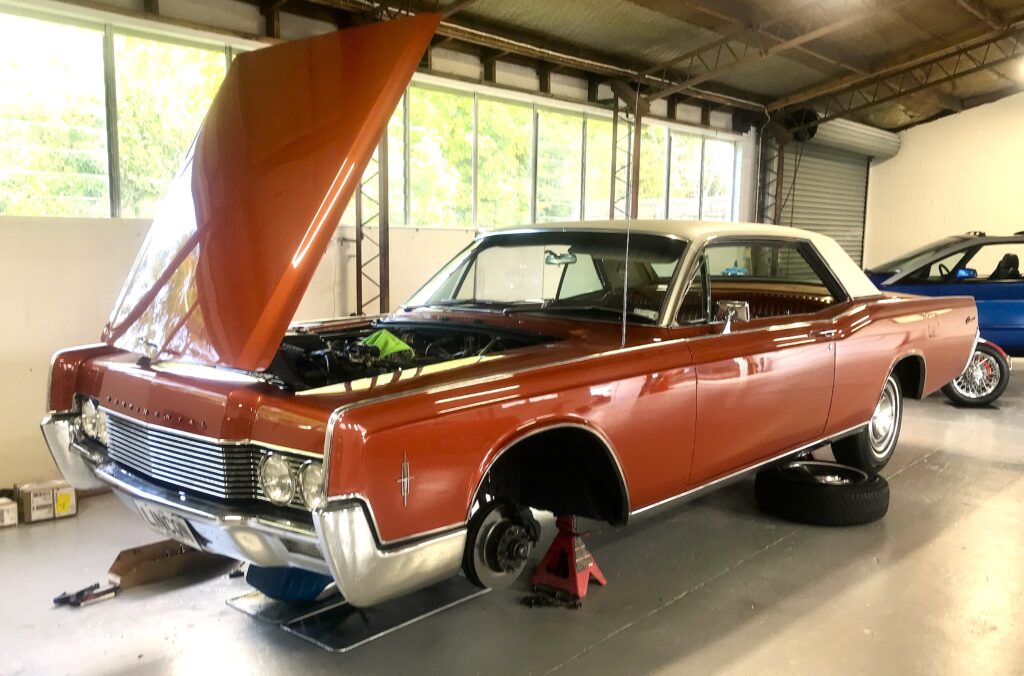
Sporting double – Two mates share how they enjoy owning two of the 1970s motoring best classics, a 1970 Porsche 911T Coupe and a 1970 Lotus Elan Plus 2, 130 Coupe.
Sunny’s Porsche: Porsche’s sporting heritage in the 1970s was the stuff of legends. Variations like the 911 RSR and the magnificent 935 Turbo dominated sports car racing, while road-going versions offered amazing levels of performance, reliability, and that shape!
Sunvi’s Lotus: It was a slow partial restoration and had a few things done to it in that time. Dad was a member of the Lotus Club in Christchurch and had several Lotus cars. The bodywork was all done by one of the Britten guys in fibre with carbon and Kevlar reinforcement. The Britten family are friends, and John was a good friend of Dad’s. I remember them doing that bodywork in the garage at home…

Auction report: Webb’s Auction April 6
Donn Anderson takes a look at the latest Webb’s auction and finds buyers warm to what’s on offer, with some interesting results indicating what could be popular in the market this year.
“Interest was strong at the Webb’s autumn auction in Auckland on April 6, with well over half the collector’s cars finding new owners, and all seven classic motorcycles on offer also selling.
A New Zealand new, 1996 Ferrari 456 GT with a 6-speed manual transmission and showing 42,000kms came with an estimate of $100k-$120k and saw bidding reach $90k. It later sold for $103,500, including Webb’s commission.”
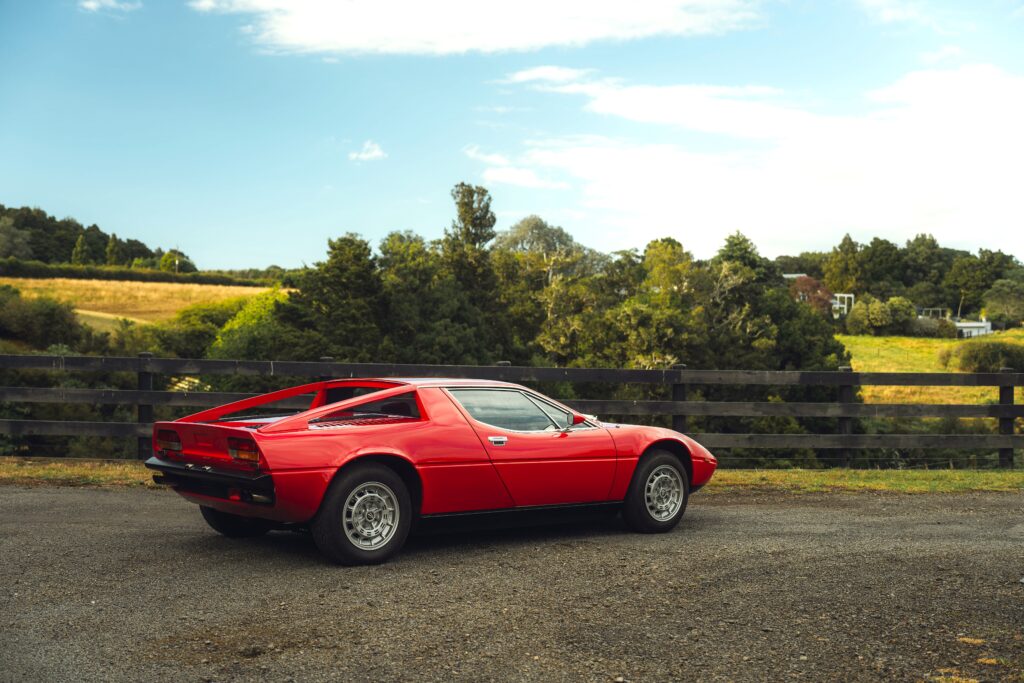
Price on – recollecting 400 issues!
Greg Price reflects on 400 issues of New Zealand Classic Car, and what made it something he still enjoys being involved with, along with times when the issues he campaigned for were occasionally ‘confronting’
“Crikey! Where do I start?
Probably around the time I first became aware of the (then-named) NZ Classic Car Directory, Trevor Stanley visited us in Dunedin to do a write-up on our 1959 Cadillac Fleetwood, which at that time was one of only seven in the whole country, and the only Fleetwood model.
That would have been 1989-1990? The next significant event was when I sent the attached cartoon (making fun of the TV One programme Frontline, and presenter Anita McNaught), which Greg Vincent published in 1995. I was ridiculing the then Transport Minister as he had just returned from an overseas junket and decided that we should start driving on the other side of the road (Like many tourists still do!).
Also, later in 1995 (?) was the Christchurch Concours d’Elegance show, where, while assisting with setting up one of the Zephyr Club displays, I met up with Greg Vincent.”
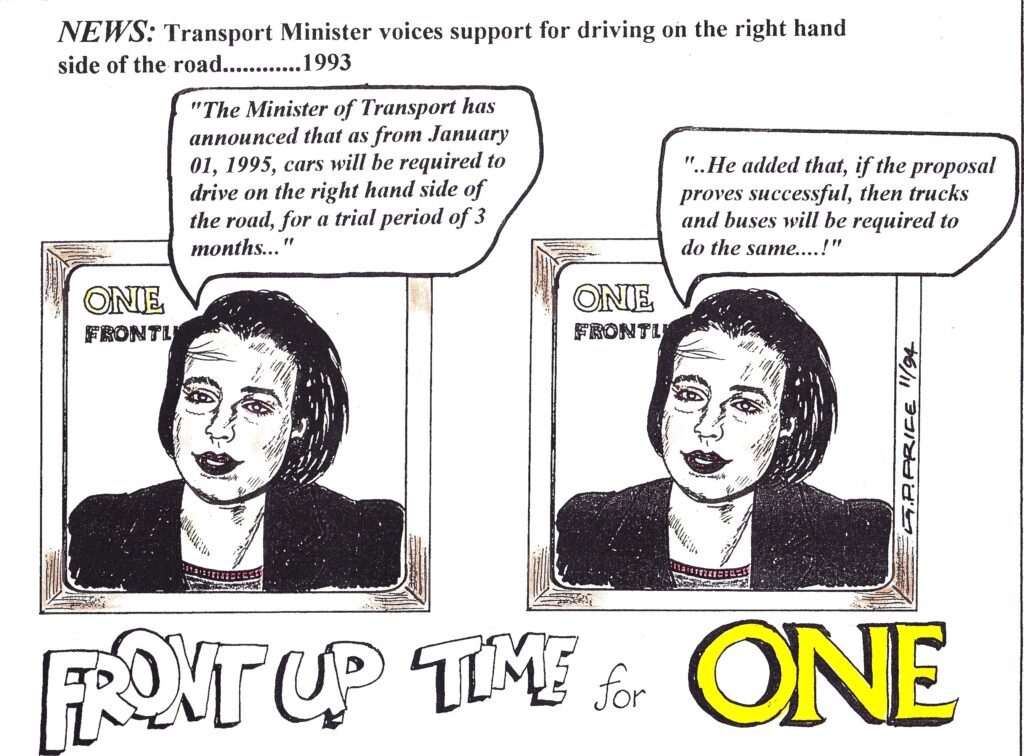
Market Report BMW’s E46 M3
Few cars from BMW’s back catalogue resonate so strongly with enthusiasts as the sporting M3 models, giving enthusiasts a more involving drive. Pure Driving Nirvana!
“With a deep sporting and racing heritage, one of the most rewarding drives of any sports saloon/coupe, each M3 generation has its fair share of fans. One generation coveted for more than 20 years now has been the E46. For many, it represents the last of the old school analogue M3s. “It is widely regarded as the best M3 made,” says Roland Dubek. “It hit the sweet spot in a time where there was enough technology to make it an advanced, well-handling vehicle to drive, yet analogue enough not to be full of electronically assisted this, that and the other.”
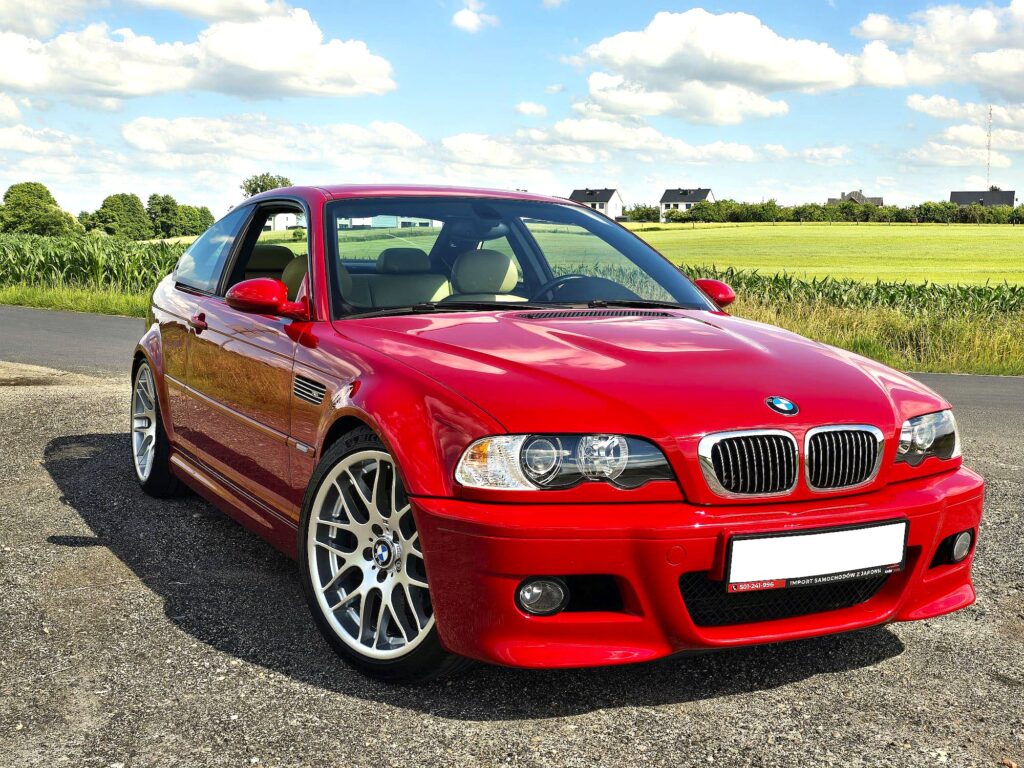
Kits and Pieces: Factory Five Racing 818C
Made in the USA with Japanese parts – NZ-built in my garage!
In New Zealand, we have a wide range of cars to choose from. Admittedly, most of them look like toasters, which, in a way, is a good thing because it keeps car enthusiasts looking back to an era when cars were not designed by committees or computers determined to play it safe to ensure the best return for each dollar invested.
“Like most kit car manufacturers, FFR started building replica cars, with the first car, a Cobra 427SC, leaving the factory in 1995. This led to them being taken to court by Shelby for copyright infringement. FFR won the case and continues to build Cobra replicas to this day. The Cobra was followed by fibreglass bodies for the hot-rod market. The first in-house car they built was the GTM supercar in 2002. It was expensive and sold in limited numbers. It showed, however, that there was a demand for in-house bespoke cars. To complement the GTM, David Smith and his team designed the 818. With the 818, FFR wanted to move car building more into a new and younger generation with a modern, affordable sports car for the street and the track.”

Looking back – Sacred Quest of a Road Warrior part 1
The 1980s heralded the collapse of the Soviet Union. New Zealand faced a moral dilemma, with the 1981 Springbok Tour bringing the reality of civil unrest and conflict a bit too close to home! For better or for worse, New Zealand was changing, and with a camera in hand, Gerard reminds us of those times.
“Following on from the endless excesses of everything in the 1970s, there seemed to be a retrenchment, a paring back, if you like, in the 1980s. Not a bad thing in some ways, when one remembers the cringe factor of the ‘in-your-face’ interior décor of houses, crockery and kitchenware that almost required sunglasses to look at, and not to mention, the hideously garish fashion crimes of the day!
Long collars, with open neck shirts displaying hairy chests with gold medallions, flared pants, platform shoes and shoulder-length hair, were fashion crimes in the recent memory of the late ‘70s, which we were desperately trying to forget. Mind you, the Hot Pants, Mini Skirts, and even skimpier bikinis ladies were wearing were definitely to our taste!
The arrival of the ‘80s brought about a reining in of much of this extrovert activity in fashion, architecture, art and music. From the mega-paid and overproduced music of the ‘70s Superstars, read Elton John, Rod Stewart, etc, we entered a new era of trimmed-back music that became known as ‘New Wave’. Artists like Simple Minds, The Police, Blondie, and others spring to mind. It was a kind of going back to the future, and this movement spread into many spheres.
I was lost in a suburban wasteland as the ‘80s commenced. South Auckland was a backwater in those days, off the radar of any visible cultural vibrancy that you see today. Endless streets of sameness (some might say it hasn’t changed!). It felt like Groundhog Day every time I left the rented compound.”

1971 Mazda Capella – Timewarp Mazda
In a brave move in the late 1960s, Mazda committed itself to the rotary engine, with the little R100 coupe testing the market first, but it was the Capella/RX2 Coupes that established the company as a serious maker of rotary engine cars, earning an enviable worldwide sporting reputation.
“Regular e-mails and phone calls often arrive about classic cars, so when Christchurch enthusiast Quentin Goodman sent us photos and a brief story about his late grandfather’s Capella, there was naturally the assumption of okay, another tidy Japanese import. That was true, but the game was given away when I spotted the plastic covers still on the door cards! What a story it turned out to be with what is an utterly original, New Zealand-new Mazda!
It turns out that the Mazda rotary bug is alive and well in the Goodman family, with Quentin owning a Series 1 RX7 as well.
A confession here too, as I am a huge Mazda rotary fan, so when I met up with Quentin, the car turned out to be far better than expected, and it is being brought back to pristine condition, as Quentin explains.
“It’s a 1971 Mazda Capella imported from Japan, and my grandfather, David Wells, bought it in February 1972, and he lived just out of Hokitika at Kowhitirangi. He had it until 2021, just after (Covid-19) the lockdowns, and it spent all its time over on the ‘Coast. I bought it off the estate.”

Peter Bruin – A quiet achiever – part three
Concluding our profile of Peter Bruin, Bob Hulme takes a detailed look at the heritage of this survivor and why this car is possibly Peter’s most significant creation, his design, the Targa Fiat.
“Built in 1969 by well-known Auckland fabricator Peter Bruin, this car has done well to now appear as it was when originally built. It has seen plenty of action, and it’s a credit to those who caringly brought it back from the brink of extinction in their ownership.
Built for either the racing track or the road, it has put smiles on the faces of its owners. Dave Rickerby used it on the road, but admitted needing a bit of opposite lock when slippery roads were encountered. His next birthday will be one that starts with an eight and ends with an Ooh, so he is thinking, maybe he could settle for a less exciting car now and could part with the Targa Fiat, which happened while I was putting this story together.”
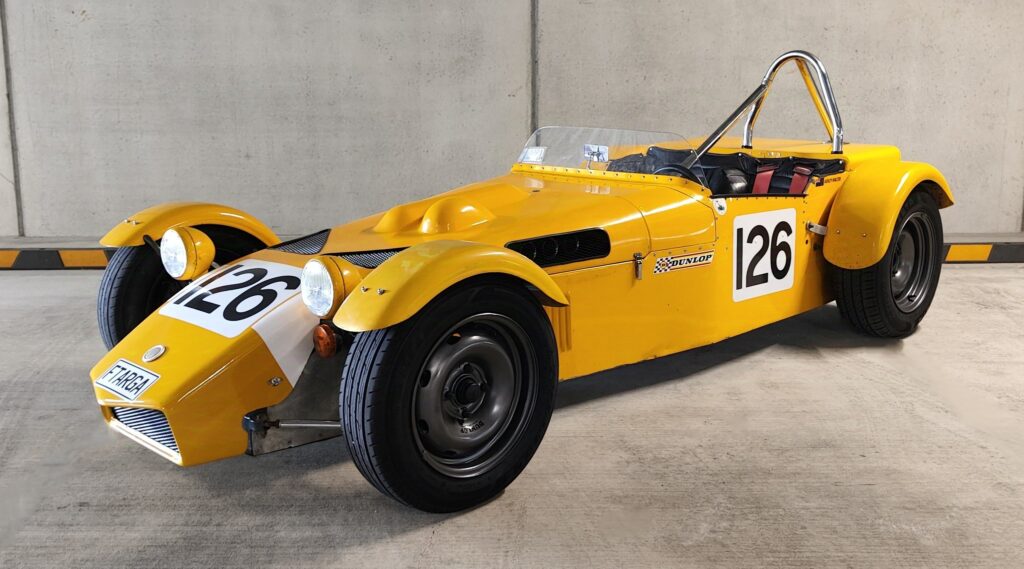
Beach Hop report 2025 – Retiring original from the Beach Hop
Local identity, Noddy Watts, is stepping down after 25 years of coordinating the New Zealand Beach Hop into being the largest and most popular automobile celebration in the country.
“This year, the Beach Hop celebrated its largest ever attendance of over 2025 vehicles. More cars, more people, all to see its inventor, the Wizard of Whangamatā, retire and pass the mantle to the next festival coordinator.
Before The Beach Hop, local Coastal Rockers, Rock ‘n’ Roll Club hosted an annual dancing event with clubs from the Bay of Plenty, Auckland and Waikato congregating in Whangamatā for the weekend, with a dance on Saturday night. Attendees commented that there was nothing to do during the day.”
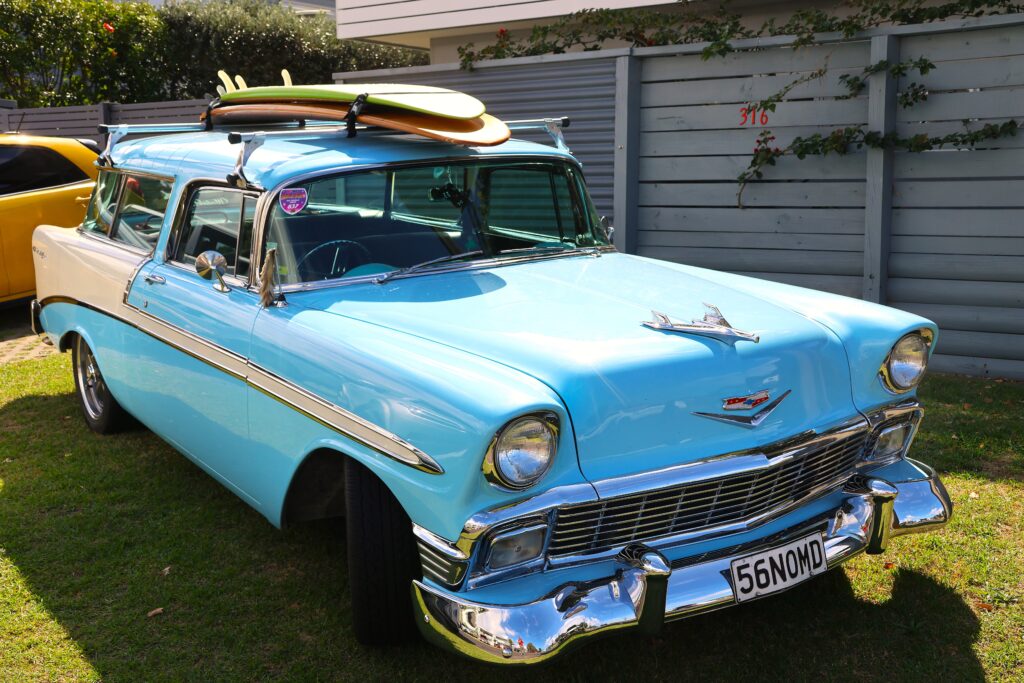
Classic motorsport part 1 – An excellent season for classics
Change has been the constant in the 2024/25 classic racing scene, with the changing of the guard as HRC Events morphed into NZIGP Events, the Historic Racing Club’s events arm came to an end with Chris Watson’s retirement. It has been a memorable season of classic motor racing in the North Island scene.
“Developments at the Hampton Downs and Taupō circuits were driven by the evolution of the Tony Quinn-backed NextGen Championship events body to support the Tier 1 level Formula Regional Oceania Championship. Evolved from the Toyota Racing Series, it morphed into an internationally recognised single-seater stepping stone into Formula One.
The season began in September with the NZIGP Icebreaker at Hampton Downs. It’s the first event for Formula Open (FONZ), Arrow Wheels European Racing Classics (ERC), BMW Race Driver Series (BMW RDS), OK Cup and others.
In ideal conditions, FONZ promised great racing from young Kaleb Ngatoa. Formed a few years back by John Tomlin as a stepping stone from Formula First/Ford to TRS/FROC, the field contained FT40s, FT50s and Swift DB4s. Racing was close with Kaleb Ngatoa fresh from the US racing, edging Ken Smith, who managed a 2nd, DNF and 4th. Veteran Ken Smith, at 84 years young, was heard to say, “I’m only going to run if there’s some decent competition”.
ERC is a new hotly contested saloon car series, and New Zealand’s most successful classic race series, mainly for European pre-1977 saloons, sports and GT cars running road tyres, including a later classic section. Sheridan Broadbent stood out with her 1996 BMW M3 Evo “Art Car” tribute to the original by Italian artist Sandro Chia. It has a long history of Targa success, and Sheridan has taken the street legal car to an ERC series win.”
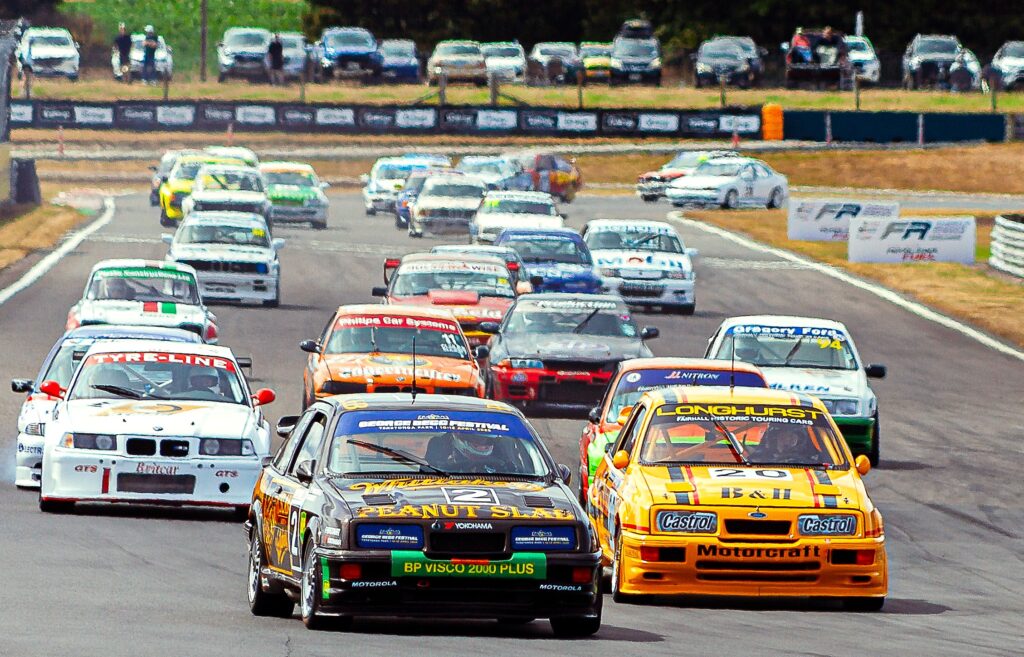
Classic car news
Event reports from Ferrari Owners Club Nationals, Corvette National Rally, Holden Nationals, Wheels at Wanaka, and more…
